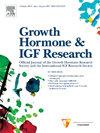Administration study of somapacitan, a long-acting growth hormone derivative, in horse for doping control purpose
IF 1.6
4区 医学
Q4 CELL BIOLOGY
引用次数: 0
Abstract
Somapacitan is the second generation of recombinant human growth hormone (rhGH) medication that retains the pharmacological effects of rhGH but exhibits a longer duration of action due to its reversible albumin-binding in the body. In general, the use of all recombinant growth hormone (rGH) analogues is banned by the human and animal sports regulatory authorities due to their anabolic and lipolytic effects. However, little is known about the elimination kinetics and biological effects of the newly introduced long-acting rhGH, somapacitan, in horses. This paper describes the administration study of somapacitan and its elimination in horses, its correlation with plasma insulin-like growth factor-1 (IGF-1) levels, an established indicator for rGH abuse, and the evaluation of the detection capability of our recently developed liquid chromatography high-resolution mass spectrometry (LC-HRMS) method in equine plasma after extraction and trypsin digestion specifically designed for controlling the misuse or abuse of somapacitan. Three thoroughbred mares were each administered 90 mg somapacitan subcutaneously. Plasma IGF-1 concentration significantly increased in all horses after administration of somapacitan. The somapacitan-specific T10 peptide fragment that allows discriminative identification of somapacitan and rhGH was detected up to 14 days and confirmed in post-administration samples collected up to 10 days. Several shared peptide fragments between somapacitan and rhGH were also detected and confirmed in plasma samples collected 14 days post-administration, supporting the applicability of the test strategy for the analysis of authentic doping control samples in horses.
一种长效生长激素衍生物somapacitan在马体内用于兴奋剂控制的研究
Somapacitan是第二代重组人生长激素(rhGH)药物,它保留了rhGH的药理作用,但由于其在体内的可逆白蛋白结合而表现出更长的作用时间。一般来说,所有重组生长激素(rGH)类似物的使用都是被人类和动物运动监管机构禁止的,因为它们具有合成代谢和脂溶作用。然而,对新引入的长效rhGH somapacitan在马体内的消除动力学和生物效应知之甚少。本文介绍了somapacitan的给药研究及其在马体内的消除,其与血浆胰岛素样生长因子-1 (IGF-1)水平的相关性,这是一种已建立的rGH滥用指标,以及我们最近开发的用于控制somapacitan滥用的提取和胰蛋白酶消化后的马血浆中液相色谱高分辨率质谱(LC-HRMS)检测能力的评估。3匹良种母马,每匹皮下注射90 mg somapacitan。给药后,所有马的血浆IGF-1浓度显著升高。在14天内检测到可区分somapacitan和rhGH的somapacitan特异性T10肽片段,并在给药后10天收集的样本中得到证实。在给药后14天收集的血浆样本中,还检测到并确认了somapacitan和rhGH之间的几个共享肽片段,支持了该检测策略对马的真实兴奋剂控制样本分析的适用性。
本文章由计算机程序翻译,如有差异,请以英文原文为准。
求助全文
约1分钟内获得全文
求助全文
来源期刊

Growth Hormone & Igf Research
医学-内分泌学与代谢
CiteScore
3.30
自引率
0.00%
发文量
38
审稿时长
57 days
期刊介绍:
Growth Hormone & IGF Research is a forum for research on the regulation of growth and metabolism in humans, animals, tissues and cells. It publishes articles on all aspects of growth-promoting and growth-inhibiting hormones and factors, with particular emphasis on insulin-like growth factors (IGFs) and growth hormone. This reflects the increasing importance of growth hormone and IGFs in clinical medicine and in the treatment of diseases.
 求助内容:
求助内容: 应助结果提醒方式:
应助结果提醒方式:


